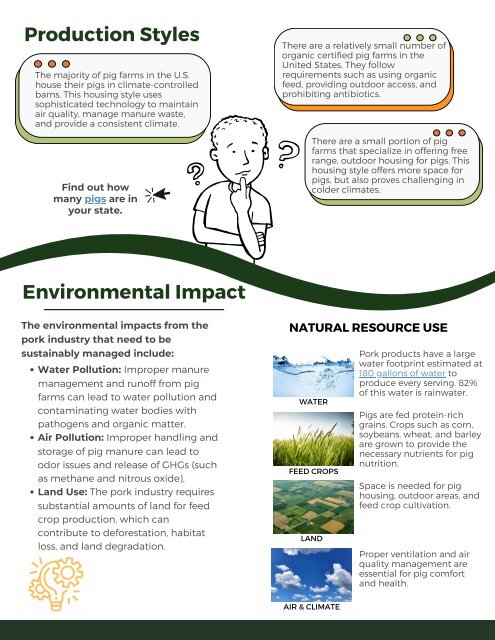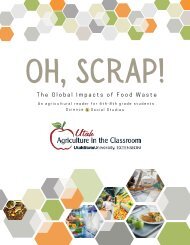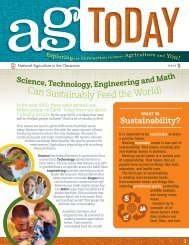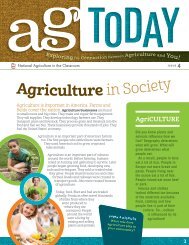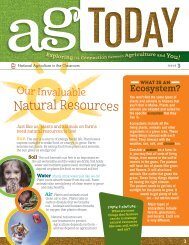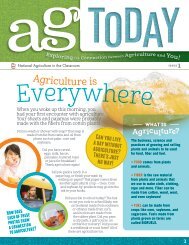Livestock Production
You also want an ePaper? Increase the reach of your titles
YUMPU automatically turns print PDFs into web optimized ePapers that Google loves.
<strong>Production</strong> Styles<br />
The majority of pig farms in the U.S.<br />
house their pigs in climate-controlled<br />
barns. This housing style uses<br />
sophisticated technology to maintain<br />
air quality, manage manure waste,<br />
and provide a consistent climate.<br />
Find out how<br />
many pigs are in<br />
your state.<br />
There are a relatively small number of<br />
organic certified pig farms in the<br />
United States. They follow<br />
requirements such as using organic<br />
feed, providing outdoor access, and<br />
prohibiting antibiotics.<br />
There are a small portion of pig<br />
farms that specialize in offering free<br />
range, outdoor housing for pigs. This<br />
housing style offers more space for<br />
pigs, but also proves challenging in<br />
colder climates.<br />
Environmental Impact<br />
The environmental impacts from the<br />
pork industry that need to be<br />
sustainably managed include:<br />
Water Pollution: Improper manure<br />
management and runoff from pig<br />
farms can lead to water pollution and<br />
contaminating water bodies with<br />
pathogens and organic matter.<br />
Air Pollution: Improper handling and<br />
storage of pig manure can lead to<br />
odor issues and release of GHGs (such<br />
as methane and nitrous oxide),<br />
Land Use: The pork industry requires<br />
substantial amounts of land for feed<br />
crop production, which can<br />
contribute to deforestation, habitat<br />
loss, and land degradation.<br />
NATURAL RESOURCE USE<br />
WATER<br />
FEED CROPS<br />
LAND<br />
Pork products have a large<br />
water footprint estimated at<br />
180 gallons of water to<br />
produce every serving. 82%<br />
of this water is rainwater.<br />
Pigs are fed protein-rich<br />
grains. Crops such as corn,<br />
soybeans, wheat, and barley<br />
are grown to provide the<br />
necessary nutrients for pig<br />
nutrition.<br />
Space is needed for pig<br />
housing, outdoor areas, and<br />
feed crop cultivation.<br />
Proper ventilation and air<br />
quality management are<br />
essential for pig comfort<br />
and health.<br />
AIR & CLIMATE


